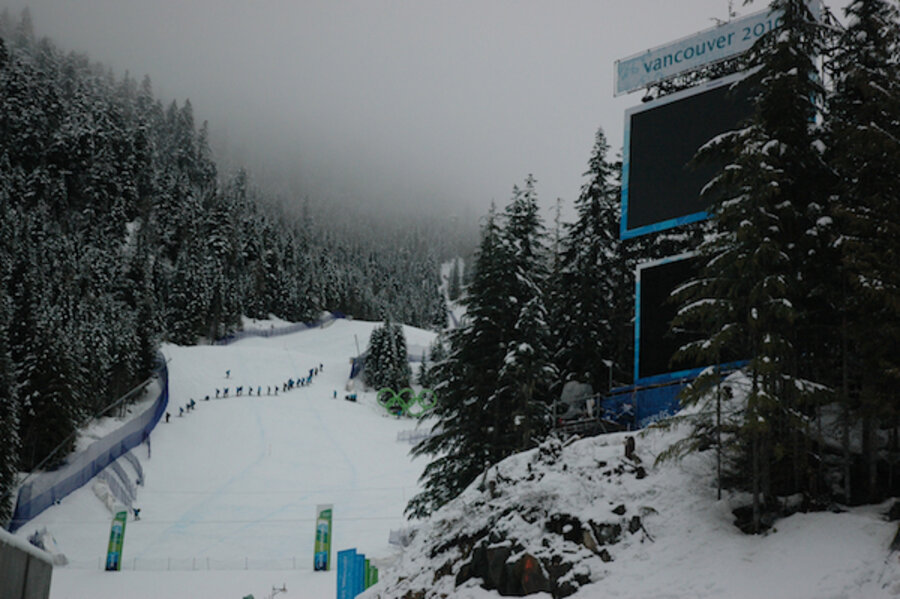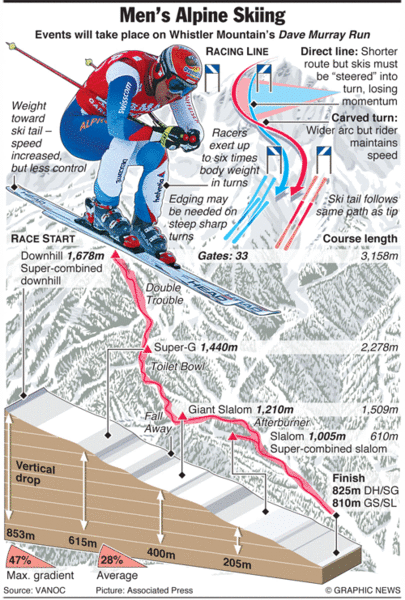Who ya gonna call to groom those Olympics tracks? The Whistler Weasels.
Loading...
| Whistler, British Columbia
When Bode Miller and his European competitors were sleeping soundly this morning, Roy Brown – a longtime volunteer with the Whistler Weasels, who manage the race courses here year-round – got up at 3 a.m. to help prepare the courses for today's super combined race.
As it turned out, the race was then postponed to a different day – and I came upon Brown and his team standing in the slush at the base of the gondola, a little wearied by the constant battle against adverse weather conditions.
Why did they come out to be one of the 500 volunteers drilling, shoveling, and erecting fencing on the Olympic courses?
“We’re beginning to wonder that,” jokes Bob Gall, who joined the Weasels for the first time this year after four decades in Whistler. Then, more seriously, he adds: “To make the Olympics a success.”
For Brown, who heads a crew of four responsible for putting up the blue safety netting along a 300-meter section of the course, it’s as much about the teamwork as being a part of the Games.
“The name of the game for everybody here is the camaraderie, just getting to meet other people,” says Brown, whose wife is working at the finish line of the cross-country venue. A recently retired schoolteacher, she’s kicking head coaches off the course and generally keeping people in line, he says with a smile.
The science behind Olympics preparation
There’s a real science to preparing an Olympic course, say Gall and his fellow crew members. There are two types of safety netting – the A netting, which is the outermost row, usually erected in front of trees and cliffs, and the B netting, which provides the initial cushion for a skier’s fall. The tougher a turn, the more rows of B netting you will see.
But the B netting and the A netting need to be at least six feet apart, so that if a racer crashes into the first netting, it won’t cause a domino effect with the subsequent rows of netting. All told, they estimate there’s about 50 kilometers of netting between the men’s and women’s courses.
Brown’s crew sets up the fences and then a course judge inspects their handiwork, often suggesting minor changes. When there’s heavy snow, like the one last night that caused today’s race to be canceled, they sometimes have to take the whole section of fencing down so that a snow cat can come through and groom the area.
Other times, they’re out there with shovels, removing the fresh snow from around the fences. Other teams, meanwhile, have to shovel the fresh snow off steep sections of the course.
Despite the early wake-up calls and up to 10 hours a day of labor, the crew say they find real satisfaction in the work – even if it is unpaid.
“It’s quite satisfying to look up the hill from across the valley and see all that netting and know I helped to put that up,” says Gall.
____________
Follow Christa from early in the morning till late at night on Twitter. Christa trained full time for the Olympics as a cross-country skier between 1997 and 2002.






